This essay was originally published in The Public Domain Review under a Creative Commons License. Please see their rules for reuse.
Julia Pastrana, a woman from Mexico born with hypertrichosis, became one of the most famous human curiosities of the 19th century, exhibited the world over as a “bearded lady” while both alive and dead. Bess Lovejoy explores her story and how it was only in 2013, 153 years after her passing, that she was finally laid to rest.

When Julia Pastrana was born, in the mountains of Western Mexico in 1834, her mother worried that her looks were the result of supernatural interference. The local native tribes often blamed the naualli, a breed of shape-shifting werewolves, for stillbirths and deformities, and after seeing her daughter for the first time, Julia’s mother is said to have whispered their name. She fled her tribe — or was cast out — not long after.
Two years later, Mexican herders searching for a missing cow found Julia and her mother hiding in a mountain cave. They took them to the nearest city, where Julia was placed in an orphanage. Sweet, intelligent, and almost totally covered in black hair, she became a local celebrity. After hearing of her unusual looks and charming disposition, the state governor adopted Julia to serve as a live-in amusement and maid. She stayed with the governor until she was twenty, when she decided to return to her own tribe. But she never completed the trip home: an American showman known as M. Rates met her somewhere on her journey back to the mountains, and persuaded her to take up a life onstage.
Julia would go on to become one of the most famous human curiosities of the nineteenth century, variously known as “the Ape Woman,” “the Bear Woman,” or “the Baboon Lady.” She made her debut in December 1854, at the Gothic Hall on Broadway in New York City. She wore a red dress, sang Spanish folk tunes, and danced the Highland Fling. Huge, appreciative crowds flocked to see her, although it wasn’t really the singing and dancing they were after: they came to gawk at her hairy face and body, her jaw that jutted forward, her unusually large lips, and her wide, flat nose. The advance publicity billed Julia as a “Bear Woman from the wilds of Mexico!” while others said she looked like an ape. In his book A Cabinet of Medical Curiosities, Jan Bondeson records a contemporary newspaper account:
The eyes of this lusus natura beam with intelligence, while its jaws, jagged fangs and ears are terrifically hideous … nearly its whole frame is coated with long glossy hair. Its voice is harmonious, for this semi-human being is perfectly docile, and speaks the Spanish language.
It’s worth noting that the idea that Julia was half-human didn’t originate with the press. Physician Alexander B. Mott, son of renowned New York surgeon Valentine Mott, examined her during a private back-room viewing and declared her a hybrid, half-human and half-orangutan. Other doctors agreed. At the time, orangutans were the biggest and most fearsome primate most Americans knew, a symbol of wild, primitive nature and dangerous sexuality. The rampaging orangutan of Poe’s 1841 story The Murders in the Rue Morgue, who slits a beautiful woman’s throat with a straight razor, helped cement the associations of these creatures with horror, fascination, and sex. But the link wasn’t new: two hundred years earlier, Dutch doctor Jacob Bontius wrote that orangutans were “born from the lust of Indian women, who mix with apes and monkeys with detestable sensuality.”
And while Julia’s promotional material emphasized her femininity, in keeping with other representations of nineteenth century bearded women, it also underlined her animalistic, racialized otherness. Her promotional material referred to her tribe of “Root-Digger Indians” as “spiteful and hard to govern,” living in animal caves and enjoying intimate relations with bears and apes. The implications were clear: Julia was both a symbol of our repressed animal natures and the literal product of sex with beasts.
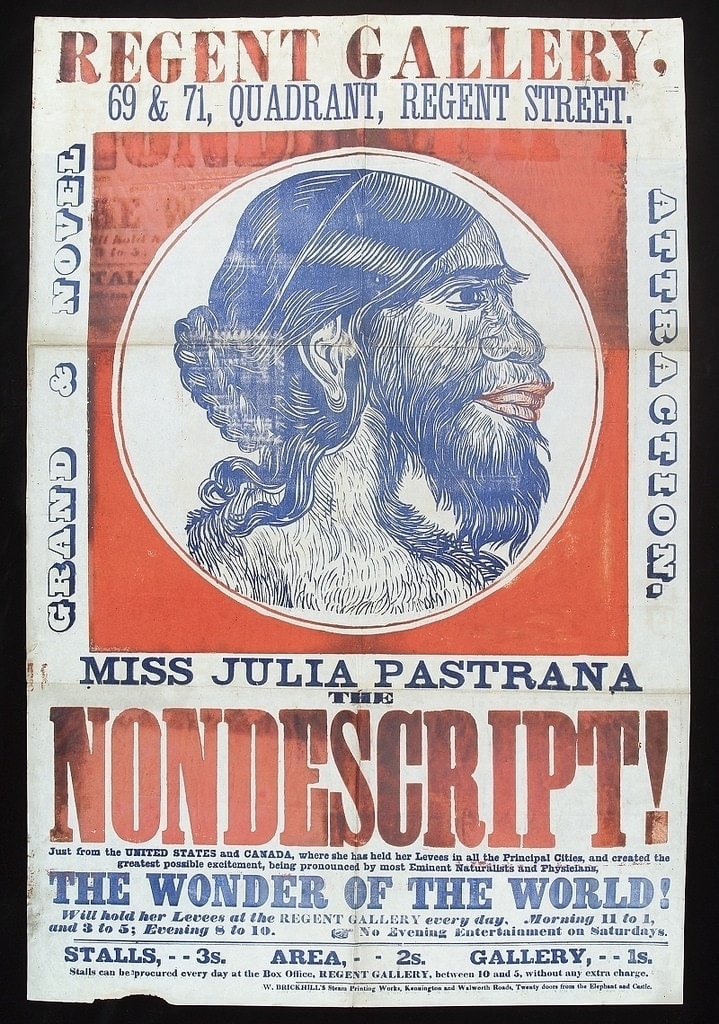
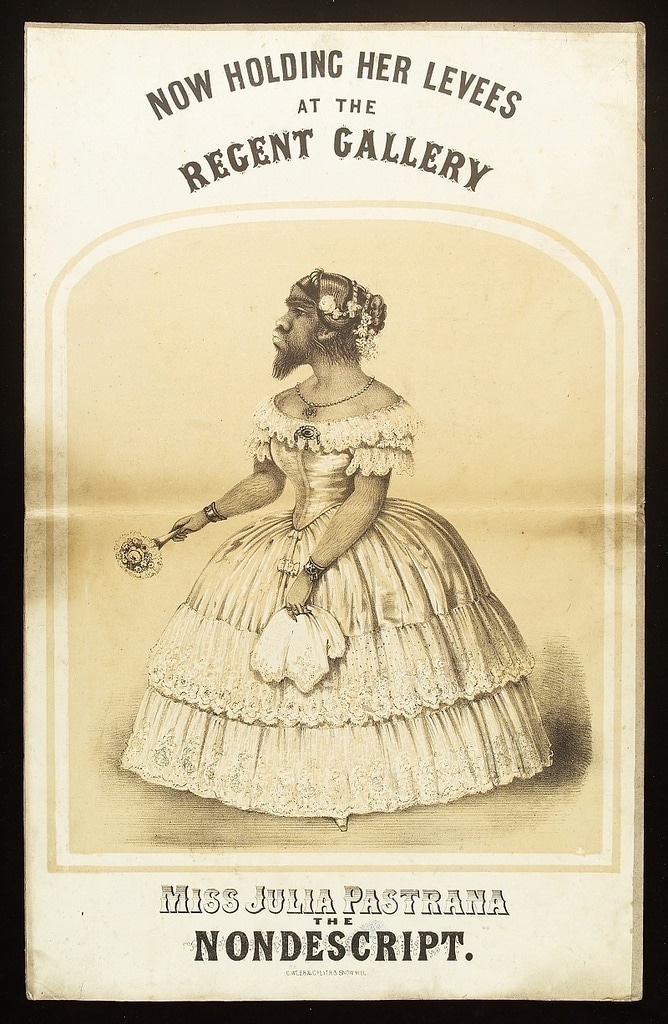
In England, where Julia ventured with a new impresario after successful tours of the eastern US and Canada, this otherness continued to be a useful promotional strategy. A poster advertising Julia’s show at London’s Regent Gallery, where she appeared three times a day in 1857, portrayed her with exaggerated, reddened lips and a large nose, much like contemporary racialized images of African-Americans. (This despite the fact that at least one doctor declared she had “no trace of Negro blood.”) The twelve-page promotional booklet that Theodore Lent, Julia’s new showman, prepared advertised her as “the Baboon Lady,” and again described her parents’ close contact with wild animals. But it also assured audiences that in Julia “the nature of woman predominates over the ourang-outang’s,” and described her as sociable, clever, and kind.
While Julia’s promotional package included certificates from scientists attesting to her hybrid nature, from the start there were those who knew she was entirely human. Anatomist Samuel Kneeland Jr, former curator of comparative anatomy for the Boston Natural Historical Society, examined Julia and declared her all human, and “a perfect woman, performing all the functions of her sex.” In 1857, the zoologist Francis Buckland visited her London hotel room and described her “hideous” facial features but “exceedingly good” figure, adding that she “had a sweet voice, great taste in music and dancing, and could speak three languages.” He added: “I believe that her true history was that she was simply a deformed Mexican Indian woman.”
The most famous English scientist of the day, Charles Darwin, did not go to see her in London, but learned of her existence and of a cast taken of her teeth, which was supposed to show an irregular double set in both upper and lower jaws. In his Variation of Animals and Plants Under Domestication, Darwin compared Julia to hairless dogs, theorizing that skin disease in the animal world could be connected to excess teeth. Julia, however, didn’t have extra teeth, just thickened gums that made misleading impressions on the casts. Had anyone bothered to ask her about her mouth, she would have explained that she had the usual number of teeth. But almost all the doctors who examined her directed their questions to Lent, while Julia kept silent.
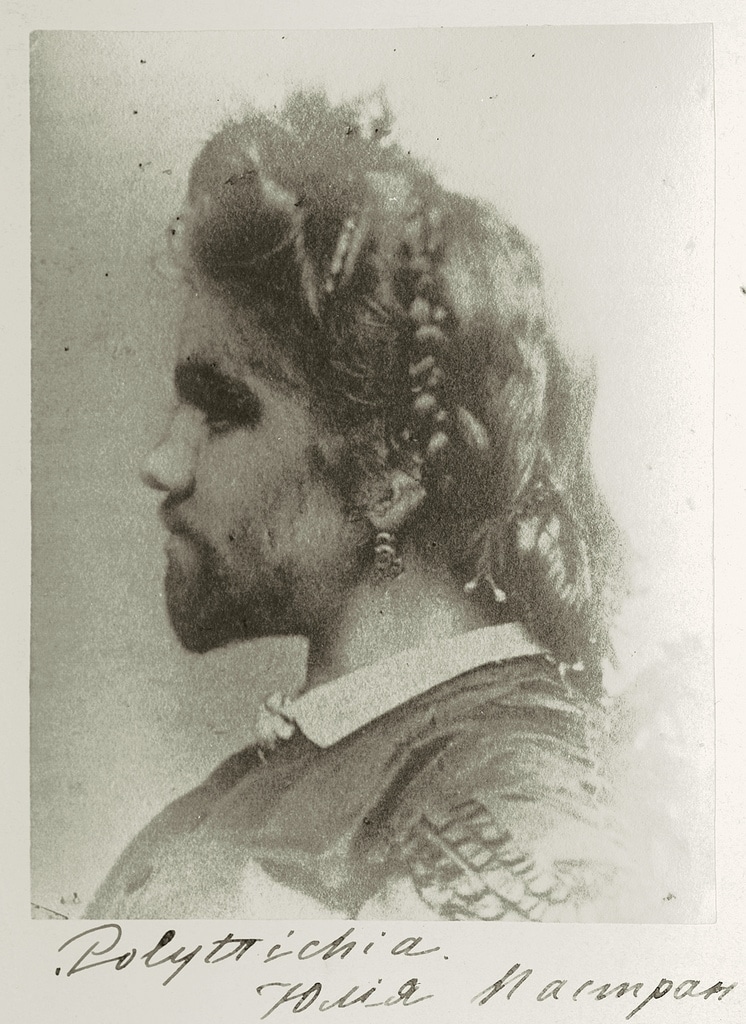
Silent but lucrative, which was how Lent liked it. Exhibiting Julia had made Lent a wealthy man, but by then rival showmen, possibly even including P.T. Barnum, began to take an interest in her. Lent decided to make the arrangement with his living, breathing, investment more permanent; he proposed to Julia.
We don’t know exactly what Julia thought of Lent, although Bondeson believes she was in love and “touchingly devoted” to him. Certainly, Julia’s entire world revolved around her showman: she was not allowed to go out during the day, in case being seen on the street would diminish her earning power, and only travelled to the circus at night wearing veils. She had very few friends, although she did develop a rapport with the Viennese actress and singer Friederike Gossman, who later said that a “light fog of sadness” always hung over Julia. Nevertheless, Julia accepted Lent’s proposal. She once told Gossman, “[my husband] loves me for myself.”
Aside from Gossman, one of the few who took Julia seriously as a person was German circus owner Hermann Otto. He visited Julia in Vienna and had a long conversation with her, later recording his impressions in his book Fahrend Volk (Travelling People). He wrote that Julia seemed:
a monster to the whole world, an abnormality put on display for money, someone who had been taught a few artistic turns, like a trained animal. [But] for the few who knew her better, she was a warm, feeling, thoughtful, spiritually very gifted being with a sensitive heart and mind… and it affected her very deeply in her heart with sadness, having to stand beside people, instead of with them, and to be shown as a freak for money, not sharing any of the everyday joys in a home filled with love.
In the winter of 1859, the couple travelled to Moscow, where crowds flocked to their exhibition at the Circus Salomansky. That August, Julia discovered she was pregnant. The baby, which arrived in March 1860 after a difficult birth, was unusually large, covered in hair like his mother, and had the same pronounced lower facial features. Julia was said to have held him and cried.
The baby lived only thirty-five hours, and Julia, who had been lacerated with forceps during the birth, survived for just a few more days after that. The official cause of death was metro-peritonitis puerperalis (inflammation of the peritoneum about the uterus), but more romantic sources say she died of a broken heart. Lent admitted spectators to her deathbed, where she is supposed to have said “I die happy, because I know I have been loved for my own sake.” This fits nicely into the nineteenth century predilection for grand last words, but it seems a little too perfect to be true.
By impregnating his wife, Lent’s plan to secure his investment through marriage had backfired—or so it seemed. At the hospital where Julia gave birth, Lent met a Professor Sokolov of Moscow University. Sokolov was an expert on embalming, and had recently pioneered a technique that blended mummification with taxidermy, creating corpses that still looked rosy and alive. He and Lent struck a deal, in which Sokolov would buy the bodies of Julia and her son, preserve them, and put them on display at the university’s Anatomical Institute. Sokolov kept the details of the embalming to himself, although we know the process took him six months. When the bodies were sufficiently infused with decay-arresting chemicals, Sokolov posed both mother and child standing up, the baby perched on a rod with an alert expression on his face, his mother standing with hands on her hips, feet wide apart, face turned to one side. The confident pose makes it possible to imagine Julia, just for a moment, as being like any self-possessed young woman standing on the corner waiting for a friend, a bus, a taxi, the end of the day to come.
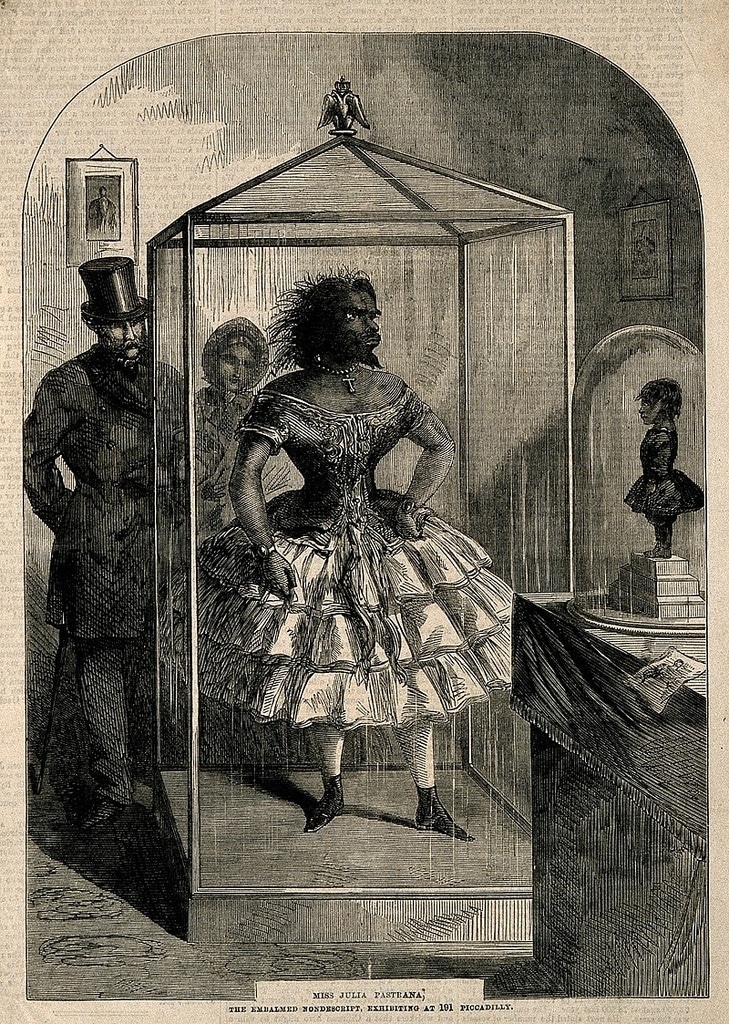
But Julia had a far more unusual story. Her body stayed at the Anatomical Institute’s museum for only six months, before Lent, hearing how good she and her son looked, took advantage of an escape clause in his contract and returned to take them back. Evidently he realized that Julia could be a money-maker dead as well as alive.
Lent put the bodies on display in London in 1862, where they could be seen for a shilling—less than he charged when Julia could sing and dance, but at least now he could display her for longer periods of time. Again the scientists weighed in: Buckland visited and said “the face was marvelous, exactly like an exceedingly good portrait in wax,” while The Lancet declared the embalming “completely successful.” The bodies went on to tour, and when they visited Vienna, Hermann Otto described seeing his old acquaintance in a “red, silk-like harlot’s dress with a frightening rictus across her face.”
A few years later in Karlsbad, Lent heard of another woman, Marie Bartel, who suffered from conditions similar to those of his late wife. (Today the official diagnosis for Julia’s maladies is generalized hypertrichosis lanuginosa, which produced the hair covering her face and body, and gingival hyperplasia, which thickened her lips and gums). Determined to add Marie to his show, Lent threw a bag of plums over a wall and into the garden where she spent her days. A little while later, he persuaded her father to let him marry her. He promised to never exhibit Marie, but the oath was short-lived. Soon she was singing and dancing onstage as “Zenora Pastrana,” Julia’s “little sister,” with the embalmed mummies of Julia and her son behind her for an added macabre touch.
But perhaps “Zenora” had the last laugh. After further exhibitions throughout Europe and America, the pair retired in St. Petersburg, where Lent began to go insane. At least once, he showed up nearly naked on a bridge over the River Neva, shrieking incomprehensibly, tearing up bank notes and throwing them into the water. Marie had him committed to an asylum, where he died shortly thereafter. As for Marie, she moved back to Germany and sold the embalmed bodies of Julia and child, which then shuttled among fairs, amusement parks, museums, and chambers of horror throughout Europe for decades.
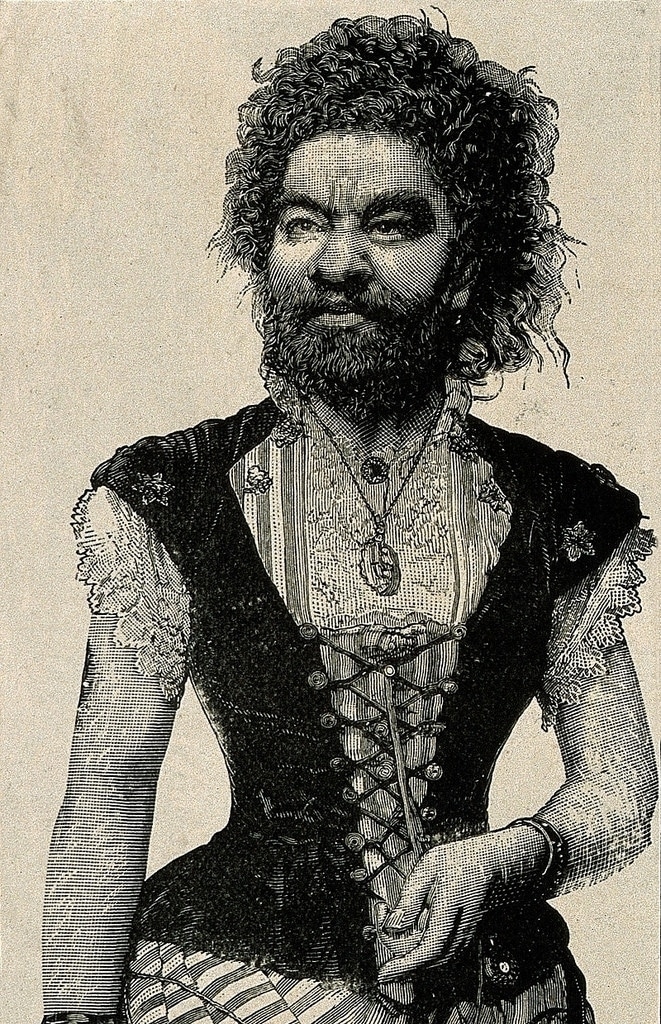
In 1921, Haakon Lund, manager of Norway’s then-biggest carnival, purchased the bodies of Julia and her son from an American in Berlin. They arrived as part of a cabinet of curiosities that held 8,000 other objects, including body parts submerged in giant glass jars, preserved heads, deformed fetuses, Siamese twin embryos, two-headed calves, an entire human skin nailed to a plank, and other choice items. Lund exhibited selections from the cabinet alongside a wax museum of venereal diseases, calling it the Hygienic and Anatomical Exhibition. The show toured through Norway in the 1920s with the slogan “Humanity, know thyself.”
By then, however, the culture around exhibiting human oddities had started to change. As the nineteenth century progressed, “freak” exhibitions fell more and more out of favor, and Lund took pains to present his exhibition under the guise of popular education. He hired medical students wearing white lab coats to serve as guides, and displayed posters that at least gave the pretence of providing medical and scientific background information. However, during World War II the Nazis deemed the exhibit obscene, and ordered the wax models melted down for candles — an order which Lund managed to avoid.
After surviving the war, the bodies went into storage in the 1950s. By the 1970s, when the bodies emerged for small tours, they were frequently greeted by outrage in the newspapers. In 1973 Sweden banned their presence, saying corpses could no longer be exhibited for profit. This marked the end of their touring days, and Lund stashed the mummies in the carnival’s storehouse near Oslo. Three years later, teenagers broke in and ripped off Julia’s arm, thinking she was a mannequin. The police later recovered the bodies, but Julia’s infant was damaged beyond repair. He ended up in the trash.
Julia’s body re-emerged in the public consciousness in 1990, when journalists at the Norwegian magazine Kriminal Journalen discovered her languishing in the basement of Oslo’s Institute of Forensic Medicine. From then on, the fate of Julia’s body became a fixture of Norwegian newspaper reports and government committees. Journalists, academics, and other officials spilled a great deal of ink debating the merits of burying her versus keeping her body above ground so that scientists might one day study her conditions. In the end, Norway’s Ministry of Church, Education and Research decided to keep the remains above ground, and they were moved to the Institute of Basic Medical Science at the University of Oslo in 1997.
In 2005, Laura Anderson Barbata, a Mexico City-born, New York-based visual artist then on a residency in Oslo, began petitioning the university for the repatriation of Julia’s body. Barbata had become aware of Julia’s plight two years earlier, after her sister produced a play called The True History of the Tragic Life and Triumphant Death of Julia Pastrana, the Ugliest Woman in the World, which is conducted entirely in the dark.
While the initial replies from the university were disappointing, Barbata persisted, placing a death notice for Julia in an Oslo newspaper and arranging for a Catholic Mass to be said for her. In 2008, Barbata was allowed to make her case before Norway’s National Committee for the Evaluation of Research on Human Remains, which agreed that “it seems quite unlikely that Julia Pastrana would have wanted her body to remain a specimen in an anatomical collection.” The governor of Julia’s home province of Sinaloa got involved, as did the Mexican ambassador to Norway, and an official petition for Julia’s return to Mexico was lodged.
In February of 2013, Julia’s body—encased in a white coffin covered in white roses—was finally buried in a cemetery in Sinaloa de Leyva, a town near her birthplace. Despite all she endured, Julia’s story had something of a happy ending. It’s a pity she wasn’t alive to see it — and to know she was remembered as more than a monster.
Bess Lovejoy is the author of Rest in Pieces: The Curious Fates of Famous Corpses, which Amazon named one of the best books of 2013. She writes frequently about the darker corners of history, and her work has appeared in The New York Times, The Wall Street Journal, Time, The Smithsonian, Lapham’s Quarterly, Slate, The Boston Globe, and elsewhere.
Further Reading

Rest in Pieces: The Curious Fates of Famous Corpses (Simon & Schuster, 2013) by Bess Lovejoy
Lovejoy explores the fascinating after-life of corpses, looking at how the bodies (and bodyparts) of the famous dead have been stolen, sold, or pickled after they’ve been laid to rest.